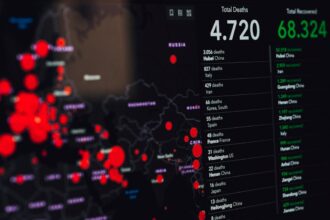In the aftermath of World War II, the world found itself in a precarious position, with the United States and the Soviet Union emerging as superpowers. Both nations recognized that the scientific advancements made by Germany during the war could provide them with a significant edge in the burgeoning Cold War. The hunt for German scientific knowledge became a priority, as both sides sought to harness the expertise of German scientists who had contributed to various fields, including rocketry, nuclear physics, and medicine.
This quest was not merely about acquiring knowledge; it was about securing national security and technological superiority in a rapidly changing geopolitical landscape.
The V-2 rocket program, for instance, showcased Germany’s advanced capabilities in rocketry, which would later influence space exploration and military technology.
As the United States and the Soviet Union raced to capture this knowledge, they employed various strategies, including recruitment, espionage, and covert operations. The stakes were high, as the nation that could effectively integrate this scientific knowledge into its military and technological frameworks would gain a decisive advantage in the Cold War.
Key Takeaways
- The hunt for German scientific knowledge was a key priority for both the US and the Soviet Union during the Cold War.
- Espionage played a crucial role in obtaining German scientific knowledge and gaining an advantage in the Cold War.
- Operation Paperclip brought German scientists to the US, contributing to American technological advancements.
- Soviet espionage efforts in Germany aimed to steal German scientific knowledge and gain an edge in the Cold War.
- The impact of stolen German science on the Cold War was significant, shaping the technological and military competition between the US and the Soviet Union.
The Role of Espionage in the Cold War
Espionage played a pivotal role in shaping the dynamics of the Cold War. Both the United States and the Soviet Union engaged in extensive intelligence-gathering operations to uncover each other’s secrets and to secure valuable information that could tilt the balance of power. This clandestine warfare extended beyond military strategies to encompass scientific advancements, economic intelligence, and political maneuvering.
The Cold War was characterized by a pervasive atmosphere of suspicion and paranoia, where every piece of information could potentially alter the course of history. The intelligence agencies of both superpowers, such as the CIA in the United States and the KGB in the Soviet Union, were tasked with infiltrating enemy lines to gather critical data. Espionage became an art form, with agents employing a range of techniques to obtain sensitive information.
From wiretapping to human intelligence (HUMINT) operations, these agencies left no stone unturned in their quest for knowledge. The competition for scientific secrets was particularly fierce, as breakthroughs in technology could lead to advancements in weaponry and defense systems, making espionage an essential tool in the Cold War arsenal.
Operation Paperclip: Bringing German Scientists to the US
One of the most significant initiatives undertaken by the United States to secure German scientific knowledge was Operation Paperclip. This covert program aimed to recruit German scientists, engineers, and technicians who had worked on advanced military projects during World War
The U.S. government recognized that these individuals possessed invaluable expertise that could be harnessed for American interests, particularly in fields such as rocketry and aeronautics. As a result, Operation Paperclip became a critical component of America’s post-war strategy.
| Operation Paperclip | Benefits to U.S. Government |
|---|---|
| Invaluable expertise | Contributed to American interests in rocketry and aeronautics |
| Post-war strategy | Critical component for America’s advancement |
The operation was not without controversy. Many of the scientists recruited had ties to the Nazi regime, raising ethical questions about the morality of employing individuals who had contributed to a regime responsible for horrific atrocities. Despite these concerns, the U.S. government prioritized national security over ethical considerations. Among those brought to America were prominent figures like Wernher von Braun, who played a crucial role in developing NASA’s Apollo program. The contributions of these scientists significantly advanced American technology and military capabilities, demonstrating how Operation Paperclip reshaped the landscape of scientific research in the United States.
Soviet Espionage Efforts in Germany
While the United States was busy recruiting German scientists through Operation Paperclip, the Soviet Union was equally determined to exploit Germany’s scientific resources. Soviet espionage efforts in Germany were extensive and multifaceted, involving both overt and covert operations aimed at acquiring technological secrets. The Soviets established networks of informants and agents who infiltrated various sectors of German society, including academia and industry, to gather intelligence on scientific advancements.
One notable aspect of Soviet espionage was their focus on nuclear technology. The Soviets recognized that acquiring knowledge about atomic research was crucial for their own nuclear program. They employed various tactics, including surveillance and infiltration of scientific institutions, to gain access to classified information.
The success of these efforts culminated in the development of the Soviet atomic bomb in 1949, which was a direct result of intelligence gathered from German scientists and research facilities. This achievement not only marked a significant milestone for the Soviet Union but also intensified the arms race between the two superpowers.
The Impact of Stolen German Science on the Cold War
The impact of stolen German science on the Cold War cannot be overstated. Both superpowers leveraged the knowledge acquired from German scientists to enhance their military capabilities and technological prowess. For instance, advancements in rocketry facilitated by German expertise allowed for significant developments in missile technology, which became a cornerstone of Cold War military strategy.
The ability to launch long-range missiles transformed warfare dynamics and contributed to an atmosphere of mutual assured destruction. Moreover, the integration of German scientific knowledge into American and Soviet programs led to rapid advancements in various fields beyond military applications. In medicine, for example, research conducted by German scientists contributed to breakthroughs in pharmaceuticals and medical technologies that would have lasting effects on public health.
The competition for scientific supremacy fueled innovation on both sides, resulting in a technological race that defined much of the 20th century.
The Ethical Dilemma of Utilizing Stolen Knowledge
The utilization of stolen German knowledge during the Cold War raised profound ethical dilemmas that continue to resonate today. On one hand, both superpowers justified their actions by emphasizing national security and technological advancement as paramount concerns. However, this rationale often overlooked the moral implications of employing individuals who had been complicit in a regime responsible for widespread human rights abuses.
The ethical quandary surrounding Operation Paperclip exemplifies this conflict; while American scientists benefited from German expertise, they did so at the cost of ignoring the darker aspects of their backgrounds. Furthermore, the broader implications of utilizing stolen knowledge extend beyond individual cases to encompass questions about accountability and justice. The decision to prioritize scientific advancement over ethical considerations raises concerns about how societies reconcile their pursuit of progress with their moral obligations to acknowledge historical injustices.
As nations continue to grapple with these dilemmas today, it becomes evident that the legacy of Cold War espionage is not merely a historical footnote but a complex issue that demands ongoing reflection.
The Legacy of German Science in the Post-Cold War Era
In the post-Cold War era, the legacy of German science remains influential across various domains. The contributions made by German scientists during and after World War II have had lasting effects on contemporary research and technological development. Many innovations that emerged from this period continue to shape modern science and engineering practices worldwide.
For instance, advancements in aerospace technology can be traced back to early German rocketry efforts that were later adapted by both American and Soviet programs. Moreover, as globalization has increased collaboration among nations in scientific research, Germany’s historical contributions have fostered international partnerships that transcend political boundaries. The emphasis on shared knowledge has led to collaborative projects aimed at addressing global challenges such as climate change and public health crises.
In this context, German science serves as a reminder of how historical legacies can inform contemporary practices and inspire future generations of researchers.
The Espionage Techniques Used to Steal German Scientific Knowledge
The techniques employed by both superpowers to steal German scientific knowledge were diverse and sophisticated. Espionage operations often involved a combination of human intelligence (HUMINT), signals intelligence (SIGINT), and technical means such as surveillance equipment and wiretapping devices. Agents were trained in various methods of infiltration and deception to gain access to sensitive information without arousing suspicion.
One notable technique involved establishing relationships with key individuals within scientific communities. By cultivating trust with researchers and academics, spies could extract valuable information or even persuade them to collaborate willingly with their respective governments. Additionally, both sides utilized technology to intercept communications between scientists or monitor research facilities discreetly.
These espionage techniques not only facilitated the acquisition of knowledge but also underscored the lengths to which both superpowers were willing to go in their quest for dominance.
The Race for German Scientific Secrets
The race for German scientific secrets became emblematic of the broader competition between the United States and the Soviet Union during the Cold War. As both nations sought to outpace each other technologically, they recognized that access to advanced research could provide a critical advantage in military capabilities and economic strength. This race was characterized by urgency and intensity, with each side striving to secure not only existing knowledge but also future innovations.
The competition extended beyond mere acquisition; it also involved efforts to undermine each other’s progress through disinformation campaigns and sabotage attempts. Both superpowers engaged in psychological warfare aimed at destabilizing their opponent’s scientific community while simultaneously promoting their own achievements as superior. This relentless pursuit of knowledge created an environment where secrecy reigned supreme, leading to an atmosphere fraught with tension and mistrust.
The Consequences of Cold War Espionage on International Relations
The consequences of Cold War espionage on international relations were profound and far-reaching. The aggressive pursuit of scientific knowledge through espionage not only shaped military strategies but also influenced diplomatic interactions between nations. Trust between countries eroded as accusations of spying became commonplace, leading to an environment characterized by suspicion and hostility.
Moreover, espionage activities often resulted in retaliatory measures that further strained relations between superpowers. Incidents involving captured spies or exposed operations led to diplomatic crises that complicated negotiations on arms control or other critical issues. As nations grappled with the fallout from espionage activities, it became clear that these clandestine operations had lasting implications for global stability and cooperation.
The Continued Relevance of Stolen German Science in Modern Times
In contemporary society, the relevance of stolen German science persists as nations continue to navigate complex geopolitical landscapes marked by competition for technological supremacy. The foundational work laid by German scientists during World War II has influenced modern research across various fields, including aerospace engineering, nuclear physics, and medical technology. As countries strive for innovation and advancement, they often draw upon historical legacies that shape their current pursuits.
Furthermore, discussions surrounding ethical considerations related to historical injustices remain pertinent today. As nations confront their pasts and seek accountability for actions taken during periods of conflict or oppression, questions about how knowledge is acquired and utilized come to the forefront. The legacy of stolen German science serves as a reminder that while progress is essential for societal advancement, it must be pursued with an awareness of ethical implications that resonate across generations.
In conclusion, the hunt for German scientific knowledge during the Cold War was marked by intense competition between superpowers driven by national security concerns and technological aspirations. Espionage played a crucial role in shaping this landscape as both sides sought to acquire valuable insights from Germany’s scientific community while grappling with ethical dilemmas surrounding their actions. The legacy of this pursuit continues to influence contemporary research practices and international relations today.
During the Cold War, the race for technological and scientific supremacy was intense, with both the United States and the Soviet Union vying for the upper hand. A significant aspect of this competition involved the acquisition of German scientific knowledge and expertise, which had been at the forefront of innovation during World War II.
For a more detailed examination of the impact and implications of this scientific rivalry, you can read a related article on the topic by visiting In The War Room. This resource delves into the intricacies of how stolen German science influenced the geopolitical landscape during the Cold War era.
WATCH THIS! America’s Nuclear Navy Was Born From Espionage
FAQs
What is the significance of German science during the Cold War?
German science was highly significant during the Cold War as both the United States and the Soviet Union sought to gain access to the advanced scientific knowledge and technology developed in Germany during and after World War II. This included research in fields such as rocketry, nuclear physics, and aerospace engineering.
What role did stolen German science play in the Cold War?
Stolen German science played a significant role in the Cold War as both the United States and the Soviet Union actively sought to recruit German scientists and obtain access to their research and technology. This led to a race to acquire German scientific knowledge in order to gain a strategic advantage in military and technological capabilities.
How did the United States and the Soviet Union acquire stolen German science?
Both the United States and the Soviet Union acquired stolen German science through a variety of means, including Operation Paperclip, in which the U.S. recruited German scientists, and Soviet espionage efforts to obtain German scientific research and technology. Additionally, both countries sought to exploit the knowledge and expertise of German scientists who were willing to share their expertise in exchange for protection and resources.
What were some of the key areas of German science that were sought after during the Cold War?
Key areas of German science that were sought after during the Cold War included rocketry and missile technology, nuclear physics and engineering, aerospace engineering, and advanced weaponry development. The knowledge and expertise of German scientists in these fields were highly sought after by both the United States and the Soviet Union in their efforts to gain a strategic advantage in military and technological capabilities.
What impact did stolen German science have on the technological advancements of the United States and the Soviet Union during the Cold War?
Stolen German science had a significant impact on the technological advancements of both the United States and the Soviet Union during the Cold War. The knowledge and expertise of German scientists contributed to advancements in rocketry, missile technology, nuclear physics, aerospace engineering, and other fields, which in turn played a crucial role in the development of military and technological capabilities during the Cold War.




